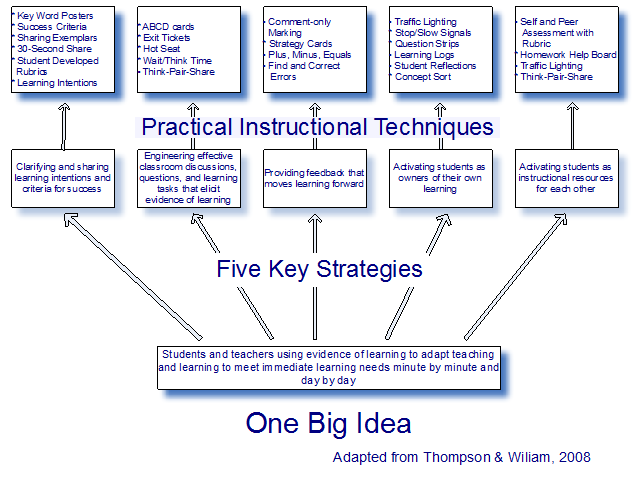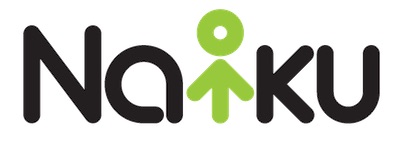 The central and core idea underlying formative assessment is that evidence of what students are learning is used to adjust instruction in order to better meet each student’s learning needs.
The central and core idea underlying formative assessment is that evidence of what students are learning is used to adjust instruction in order to better meet each student’s learning needs.
Yet, something is missing from this idea.
The focus is on instruction. What about the student? For assessment to be formative, both the teacher and the learner need to be actively involved in formative practices.
So for Thompson & Wiliam (2008), the Big Idea of formative assessment can be expressed in the following way:
Students and teachers
Using evidence of learning
To adapt teaching and learning
To meet immediate learning needs
Minute-to-minute and day-by-day
How does this Big Idea guide or help the teacher? It might be useful to focus on three key questions (Thompson & Wiliam, 2008):
- Where is the learner going?
- Where is the learner right now?
- How does the learner get there?
In considering these questions and possible answers, it is useful to unpack the Big Idea of formative assessment into the following five key classroom strategies:
- Clarifying and sharing learning intentions and criteria for success;
- Engineering effective classroom discussions, questions, and learning tasks that elicit evidence of learning;
- Providing feedback that moves learners forward;
- Activating students as the owners of their own learning; and
- Activating students as instructional resources for one another.
The following table depicts the role of the teacher, peers, and the learner in answering the three questions above.
Deriving the Five Key Strategies of Formative Assessment (adapted from Thompson & Wiliam, 2008)
| Where the learner is going | Where the learner is now | How to get there | |
| Teacher | Clarifying learning intentions and criteria for success | Engineering effective classroom discussions, questions, and learning tasks that elicit evidence of learning | Providing feedback that moves learners forward |
| Peer | Understanding learning intentions and criteria for success | Activating students as instructional resources for one another | |
| Learner | Understanding learning intentions and criteria for success | Activating students as the owners of their own learning | |
The figure below illustrates the relationship among the Big Idea, the five key classroom strategies, and some practical instructional techniques that can be used with each of the five classroom strategies. While the figure identifies several practical instructional techniques that can be used to unearth information about what students know and do not know, it is important to keep in mind that there are hundreds of these techniques.

So, how do teachers best undertake learning about and adopting the new roles inherent in implementing effective formative assessment practices in their classrooms? After all, embedding formative assessment practices in the classroom practices of both teachers and students is really as much about changing the classroom culture and the relationship between the teacher and the student as anything.
And these changes often do not come without a great deal of effort. There is no simple or quick way to expose teachers to these formative practices. While many teachers have a wealth of knowledge and skills necessary to implement formative practices, this doesn’t mean that they actually have the time to do it.
In the end, all educators will need on-going, job-embedded opportunities to practice, reflect on, adjust, and enhance their skills in order to ensure that these new formative practices are working in their classrooms and with their students.
So this takes me back to an earlier blog I wrote, Professional Development: Creating & Sustaining Effective Classroom Assessment Practices.
“Unfortunately, most educators receive very little training in effective assessment practices—from large-scale, summative assessment to classroom formative assessment—before or during their teaching experiences.
The regrettable consequence of this lack of assessment training is that both educators and students are denied access to significant amounts of information necessary for building a deeper understanding of student learning and for adjusting instruction to more closely meet the learning needs of each student.”
Something to Remember: Building teacher expertise and changing teacher practices are never going to happen with short-term professional development and training such as one-day workshops. They will only happen through on-going, sustained, and embedded practice, reflection, and adjustment.
Next Blog: The next blog will go into how teachers and administrators can best build and sustain expertise and skills in effective formative assessment practices throughout schools and districts, not just in isolated classrooms.
Reference
Thompson, M. and Wiliam, D. (2008), Tight but Loose: A Conceptual Framework for Scaling Up School Reforms, in Wiley, Caroline E., Editor (2008), Tight but Loose: Scaling up Teacher Professional Development in Diverse Contexts.

